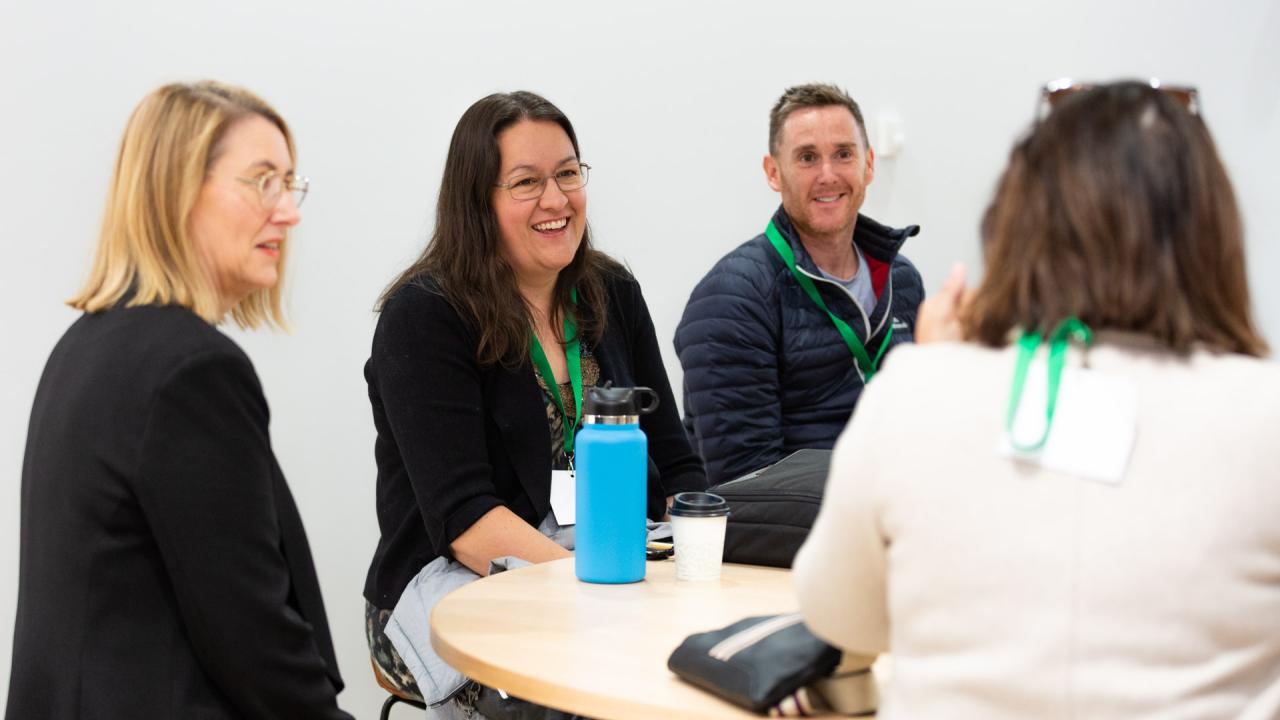24 Nov 2022
Student voice and agency


Tobias Wilkins, Master Teacher (the Arts)
Tobias is an exceptional arts educator and a highly respected leader in instructional practice. He is the inaugural Master Teacher of the Arts in 2022. Tobias is undertaking his Doctorate in Education and is a sessional lecturer at the Melbourne Graduate School of Education. Tobias contributed to the Department of Education and Training's Literacy Teaching Toolkit for media arts and is an associate editor of the Journal of Artistic and Creative Education.
We have become better at recognising that students are masters of their own experiences and that when we privilege student voices, we facilitate more opportunities for students to take ownership over their learning (Davies, 2018). What remains elusive is how to meet the challenges of authentically capturing what students are telling us and how to take meaningful actions in response.
As adults, we do not have the ability to genuinely understand the experience of the students we teach. Our own experiences of being a student are clouded by the nature of our adultness, yet it is easy for us to assume that we know how our students feel based on our own recollections (Vygotsky, 1986).
When privileging student voice, we often hold weighty goals of empowerment, democracy, transformation, and discourse – all adult concepts far removed from day-to-day student experiences and concerns (Innes, Moss and Smigiel, 2001; Keeffe and Andrews, 2015). Framing student voice through an adult lens speaks to a power imbalance that is difficult to resolve in the teacher-student relationship. For student voice to authentically exist in the classroom the teacher must let go of some agency. This is easier said than done.
If we are to authentically seek student voice, we must admit to the personal challenges that we as teachers experience when giving students the opportunity to speak critically of our practice. Good teaching practice is something students often see as inherent to the teacher and difficult to describe in detail. Conversely, it can be easier for students to explain what they don’t like or what isn’t working in a classroom (Polanyi, 1967; Schön, 1991).
The understandable urge to avoid negative feedback complicates how we might authentically seek student voice; especially where we feel such critique might reflect on us personally. As teachers, we work in a system where power dynamics are institutional – often to our advantage. SRCs, student focus groups, newsletter contributions, debating clubs and the like all give agency to student voices that are usually already privileged, eloquent and prioritised (Keeffe and Andrews, 2015). This is further complicated by the social filters that students have at their disposal – the adeptness to intuit what those in power hope they will say, and then meet these expectations. When we prioritise student voice through the existing structures of education, the student voices we are most likely to hear, are usually the ones we would most like to hear from (Innes, Moss and Smigiel, 2001; Keeffe and Andrews, 2015).
In classroom contexts, student voice is often sought as part of a reflection on a learning experience. Something that is captured after the fact for teachers to consider in their future planning. Allowing students to speak their minds at the conclusion of a learning sequence does little to build equity of voice during the process of learning (Davies, 2018). There is a valuable but often underutilised opportunity to seek moments throughout the learning sequence where students might have space to voice what they are thinking and feeling as they learn.
Plenary student voices are informed and resolved – they are not authentic reflections of the learning experience happening. Once knowledge is gained, it isn’t possible to accurately describe what it felt like not to have that knowledge (Keeffe and Andrews, 2015). When agency is only given to student voice at the conclusion of a learning sequence, we miss key opportunities to be informed by students and to take action accordingly.
Conversely, when we enshrine opportunities in education for all students to voice their thoughts and feelings, we facilitate the power for them to learn in a way that makes sense to them (Hogan, 2019). Students will make their voices heard when they perceive a genuine need to do so, and it is therefore critical that these opportunities are above all, authentic (Keeffe and Andrews, 2015). Irrevocable damage can occur where students are misled as to the worth of their voice, especially where students are told their voice matters but see no evidence of their voice impacting on their experiences of teaching and learning (Fielding, 2006).
Individual students and teachers will of course respond uniquely to opportunities for student voice and agency (Innes, et al. 2001; Davies, 2018; Hogan, 2019). Not all students can make their voice heard, not all students want to do so. To emancipate the voiceless, it is especially important to consider how we might facilitate student voice in ways that go beyond what is merely said or written (Feffer, 2009; Davies, 2018).
There is no one-size fits all approach and nor should we attempt to find one. Instead, it is crucial that we approach our facilitation of student voice with an awareness of the factors that affect our ability to authentically listen and to act upon what is being said. Students have valid insights into education that we are starting to give more space to and recognise the potential of, but authentically seeking student voice is not straightforward work. There remain circumstances both within and outside of our control that makes student voice difficult to facilitate and act upon. It is critical that we continue to create opportunities and spaces to hear our students and facilitate their agency. This does not mean we must accept and agree with student thinking in all matters – we remain the qualified experts after all; but where we act to authentically listen to our students’ thinking, education can become empowered, democratic, dialogic and transformative.
Bibliography
Davies, M. (2018). ‘Doing’ persuading: Actively constructing knowledge, voice and self. Changing English, 25(3), 264-274.
Feffer, L. B. (2009). Devising Ensemble Plays: At-Risk Students Become Living, Performing Authors. English Journal, 46-52.
Fielding, M. 2006. “Leadership, Radical Student Engagement and the Necessity of Person-Centred Education.” International Journal of Leadership in Education 9 (4): 299–313.
Hogan, S. L. (2019). Social filters shaping student responses to teacher feedback in the secondary drama classroom. NJ, 43(1), 4-19.
Innes, M., Moss, T., & Smigiel, H. (2001). What do the children say? The importance of student voice. Research in Drama Education, 6(2), 207-221.
Keeffe, M., & Andrews, D. (2015). Towards an adolescent friendly methodology: accessing the authentic through collective reflection. International Journal of research & method in Education, 38(4), 357-370.
Polanyi, M. 1967. The Tacit Dimension. New York, NY: Doubleday.
Schön, D. 1991. The Reflective Turn: Case Studies in and on Educational Practice. New York, NY: Teachers College Press.
Vygotsky, L. S. 1986. Thought and Language. Boston, MA: MIT Press.



